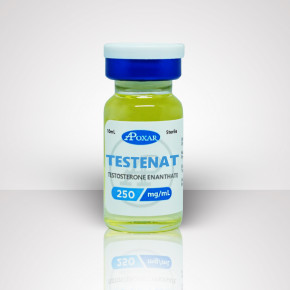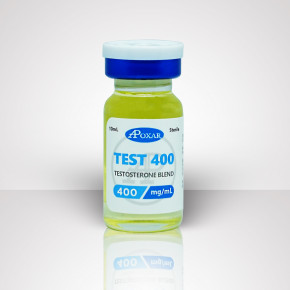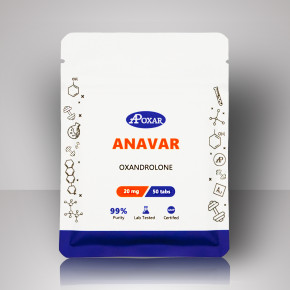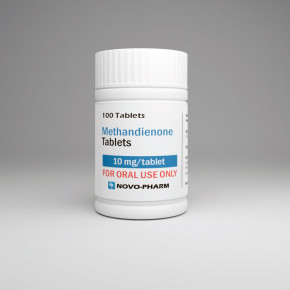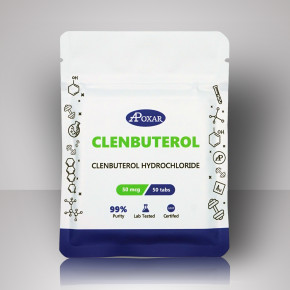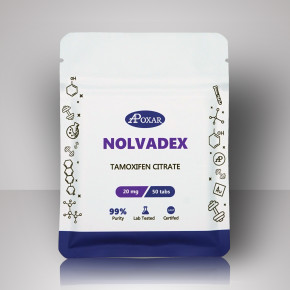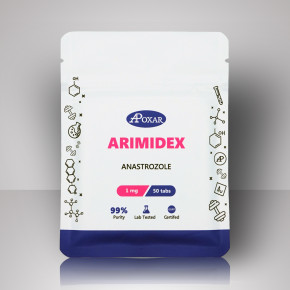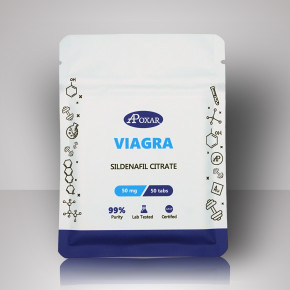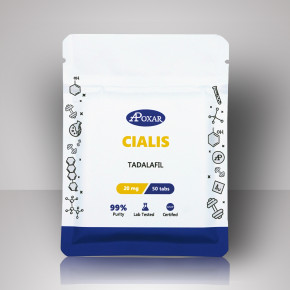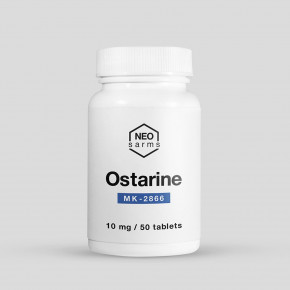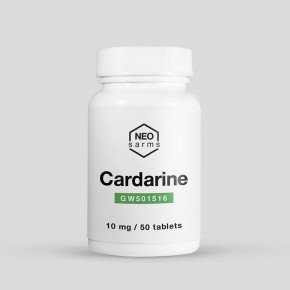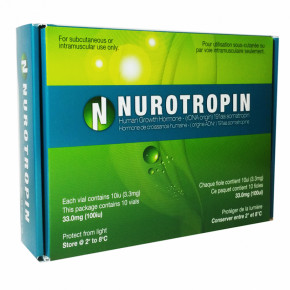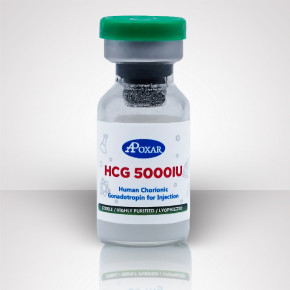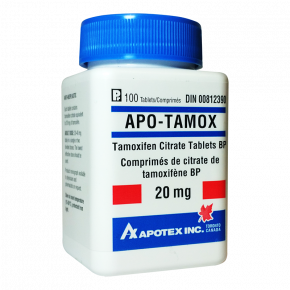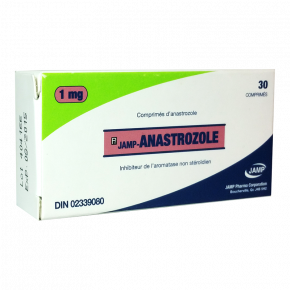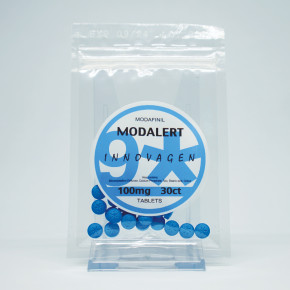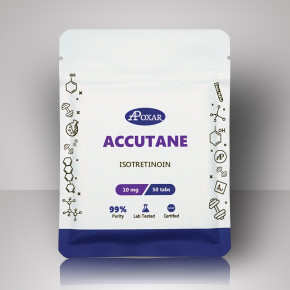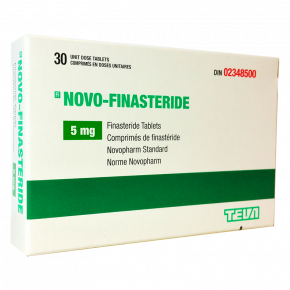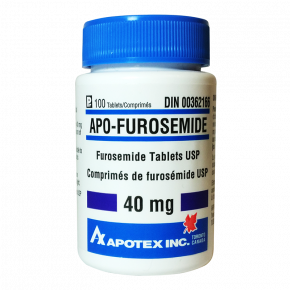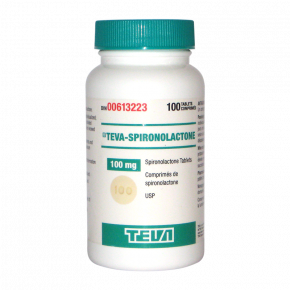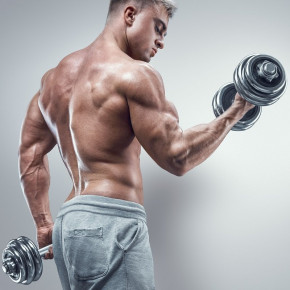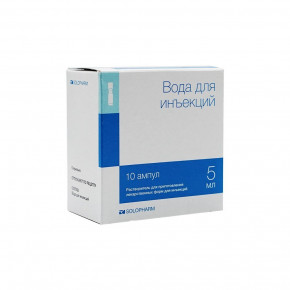 Free delivery for orders over $400
Free delivery for orders over $400Insulin
Insulin is a hormone that is used in bodybuilding as a performance enhancer. It does wonders when it comes to bulking and gaining weight.
There are no products matching the selection.
Insulin Description
Insulin is peptide hormone produced in the Islets of Langerhans in the pancreas. The release of this hormone in the human body is most closely tied to blood glucose levels, although a number of other factors including pancreatic and gastrointestinal hormones, amino acids, fatty acids, and ketone bodies are also involved. The main biological role of insulin is to promote the intracellular utilization and storage of amino acids, glucose, and fatty acids, while simultaneously inhibiting the breakdown of glycogen, protein, and fat. It is most notably identified with the control of blood sugar levels, and insulin medications are typically prescribed to people with diabetes, a metabolic disorder characterized by hyperglycemia (high blood sugar). While insulin targets many different organs in the body, this hormone is both anabolic and anti-catabolic to skeletal muscle tissue,1 2 3 a fact that explains the inclusion of pharmaceutical insulin in the realm of athletics and bodybuilding.
The use of insulin to improve performance and body composition can be a little tricky because this hormone can also promote nutrient storage in fat cells. This, however, is an activity of insulin that can be somewhat managed by the user. Athletes have found that a strict regimen of intense weight training and a diet without excess caloric and fat intake can enable insulin to show a much higher affinity for protein and glucose storage in the muscle (as opposed to fatty acid storage in adipose) cells. This is especially true in the post-exercise enhanced-absorptive state, where insulin sensitivity in skeletal muscle has been shown to increase significantly over baseline (rested) levels.4 When used during the post-training window, the hormone is, likewise, capable of producing rapid and noticeable muscle gains. The muscles often begin to look fuller (and even sometimes more defined) very soon after initiating insulin therapy, and the overall results of therapy are often described as dramatic.
The fact that insulin use cannot be detected by urinalysis has ensured it a place in the drug regimens of many athletes and professional bodybuilders. Note that there has been some progress in drug detection, especially with the analogs, but to date, regular insulin is still considered a ”safe” drug. Insulin is often used in combination with other “contest safe” drugs like human growth hormone, thyroid medications, and low dose testosterone injections, and together can have a dramatic effect on the user’s physique and performance without fear of a positive urinalysis result. Those who do not have to worry about drug testing, however, often find that insulin combined with anabolic/androgenic steroids can be a very synergistic combination. This is because the two actively support an anabolic state through different mechanisms. Insulin strongly enhances the transport of nutrients into muscle cells and inhibits protein breakdown, and the anabolic steroids (among other things) strongly increase the rate of protein synthesis.
As mentioned, the usual medical purpose for insulin is to treat different forms of diabetes. More specifically, the human body may not be producing enough insulin (Type-I diabetes), or may not recognize insulin well at the cell site although some level is present in the blood (Type-II diabetes). Type-I diabetics are, therefore, required to inject insulin on a regular basis, as they are left without a sufficient level of this hormone. Along with medication, the individual will need to constantly monitor blood glucose levels and regulate their sugar intake. Together with lifestyle modifications such as regular exercise and developing a balanced diet, insulin-dependent individuals can live a healthy and full life. When left untreated, however, diabetes can be a fatal disease.
History
Insulin first became available as a medicine during the 1920s. Credit for the discovery is most appropriately given to Canadian physician Fred Banting and Canadian physiologist Charles Best, who worked together to produce the first insulin preparations, and the world’s first effective treatment of diabetes. Their work stemmed from an idea initially proposed by Banting, who as a young doctor theorized that an active extract could be made from animal pancreases to regulate blood sugar in human patients. He needed help to try and actualize his idea, and he sought out world-renowned physiologist J.J.R. Macleod at the University of Toronto. Macleod, initially less than impressed with the unusual concept (but likely impressed with Banting’s conviction and tenacity), assigned a couple of graduate students to assist him in his work. A coin flip determined who would work with Banting, and he was eventually paired with graduate student Best. Together they made medical history.
The first insulin preparations they produced were made of crude pancreatic extracts taken from dogs. At one point the supply of laboratory animals was exhausted, and desperate to continue their research, the pair actually began taking stray dogs to supplement their pancreas supply. Shortly after, the two found that they could work with the pancreases of slaughtered cows and pigs, making their work much easier (and ethically acceptable). They successfully treated their first diabetic patient with insulin in January 1922. By August of that year, they had been successful in treating a group of clinical patients, including 15-year-old Elizabeth Hughes, daughter of former presidential candidate Charles Evans Hughes. Elizabeth was diagnosed with diabetes in 1918, and her dramatic fight for life with the disease gained national attention. Elizabeth would be saved by insulin on the doorstep of starvation, as severe calorie restriction was the only remedy known to slow the disease at the time. Banting and Macleod swiftly won the Nobel Prize for their discovery, which was presented to them approximately a year later in 1923. Shortly after, a dispute over credit arose, and ultimately Banting shared his prize with Best, and Macleod shared his prize with J. B. Collip, a chemist that assisted in the extraction and purification process.
After initially declining the assistance in the hopes that they could work out production issues on their own, Banting and his team worked with Eli Lilly & Co. to develop the first mass-produced insulin medicines using their animal extraction techniques. Their production success was extreme and rapid, and the drug became commercially available on a wide scale in 1923, the same year Banting and Macleod won the Nobel prize. That same year, Nordisk Insulinlaboratorium was founded by Danish scientist Augusta Krogh, who desperately wanted to bring back an insulin manufacturing technique to Denmark to treat his wife, who was ill with diabetes. This Denmark firm eventually became Novo Nordisk, the world’s second-leading producer of insulin next to Eli Lilly & Co.
The early insulin medications were fairly impure by today’s standards. They typically contained 40 units of animal insulin per milliliter, in contrast to today’s accepted standard concentration of 100 units. The large doses needed with these early low-concentration drugs were not very comfortable for patients, and injection-site reactions were not uncommon. They also contained significant protein impurities that would sometimes cause allergic reactions in users. Despite these faults, the drugs saved the lives of countless individuals who beforehand were faced with a sure death sentence following a diagnosis of diabetes. Eli Lilly and Novo Nordisk improved the purity of their products in the coming years, but no major improvements in insulin technology developed until the mid-1930s, when the first longer-acting insulin preparations began to surface.
The first longer-acting drug made use of protamine and zinc to delay the action of insulin in the body, extending the activity curve and reducing the number of daily injections required for many patients. Dubbed Protamine Zinc Insulin (PZI), the preparation would have an effect lasting as long as 24-36 hours. Neutral Protamine Hagedorn (NPH) Insulin, also known as Isophane insulin, followed, reaching the market by 1950. This preparation was very similar to PZI insulin except that it could be mixed with regular insulin without disturbing the release curve of the respective insulins. In other words, a regular insulin drug could be mixed in the same syringe with NPH insulin, providing a biphasic release pattern characterized by an early peak effect due to the regular insulin, and an extended action brought on by the NPH.
In 1951 the Lente insulins began to surface, which included semilente, lente, and ultra-lente preparations. The amount of zinc used in each varied, producing preparations with distinct and long-acting pharmacokinetics. Unlike previous Insulins, this was also achieved without the use of protamine. Many physicians were soon able to successfully switch their patients from NPH insulin over to a single morning dose of Lente insulin, often heralding the release of the new drugs as a big advance in insulin medications (though some would still require an evening dose with a Lente insulin to maintain full control over blood glucose levels during the 24-hour period). Up to this point, the insulin drugs made by the large pharmaceutical companies worked very well. No substantial step forward in the development of new insulin delivery technologies would come for another 23 years.
In 1974, chromatographic purification techniques allowed the manufacture of animal insulin with extremely low impurity levels (less than 1 pmol/l of protein impurities). Novo was the first to release a drug made with this technology, which it called monocomponent (MC) Insulin. Eli Lilly also released a version called “Single Peak” Insulin, likely referring to the single protein peak noticed upon chemical analysis. This advance, though significant, would be short-lived. In 1975, Ciba-Geigy produced the first synthetic insulin preparation (CGP 12831). And just three years later, scientists at Genentech were able to produce insulin using modified E. coli bacteria, the first synthetic insulin with an identical amino acid sequence as human insulin (although the animal insulins work fine in humans their structures are slightly different). The U.S. Food and Drug Administration approved the first such medicines in 1982, with the acceptance of Humulin R (Regular) and Humulin NPH from Eli Lilly & Co. The name Humulin is a contraction of the words “human” and “insulin”, of course. Novo would follow with semi-synthetic insulins Actrapid HM and Monotard HM.
The FDA has approved a variety of other insulin drug combinations over the years, including various biphasic insulin blends that use differing amounts of rapid and longer-acting insulins. More recently, we have also seen the FDA approval of Eli Lilly’s rapid-acting insulin analog Humalog. Several other analogs are also now available including Lantus and Apidra from Aventis, and Levemir and Novorapid from Novo Nordisk. A number of additional analogs are also under investigation at this time. With the large variety of different insulin medications approved and sold in the U.S. and other nations, it is important to understand that “insulin” represents an extremely broad class of medicines. As a class, these drugs are likely to continue to expand as new agents are developed and successfully tested. Today, it is estimated that 55 million people use some form of injectable insulin on a regular basis to manage their diabetes, making this an extremely important and lucrative area of human medicine.
How Supplied
Pharmaceutical insulin comes from one of two basic origins, animal or synthetic. With animal-source insulin, the hormone is extracted from the pancreas of either pigs or cows (or both) and prepared for medical use. These preparations are further divided into the categories “standard” and “purified”, dependent on the level of purity and non-insulin content of the solution. With such products, there is always the slight possibility of pancreatic contaminants making their way into the prepared drug. Specifically called biosynthetic, synthetic insulin is produced by a recombinant DNA procedure similar to the process used to manufacture human growth hormone. The result is a polypeptide hormone consisting of one 21- amino acid “A-chain” coupled by two disulfide bonds with one 30-amino acid “B-chain”. The biosynthetic process will produce a drug free of the pancreatic protein contaminants possible with animal insulin, and that is structurally and biologically identical to human pancreatic insulin. With the innate (remote) risk of contamination involved with animal insulin, coupled with the fact that the structure is (very slightly) different from human insulin, synthetic human insulin drugs dominate the market today. Biosynthetic human insulin/insulin analogs are also the most common insulins of use among athletes,and the main focus of this profile.
There are a variety of synthetic insulins available, with each possessing unique properties relating to the speed of onset, peak and duration of the activity, and concentration of dose. This therapeutic variety may allow physicians to tailor a treatment program for insulin-dependent diabetics that allows for the least amount of daily injections and the greatest level of patient comfort. It is important that one should be aware of the individual activity of any insulin drug before attempting its use. Due to the differences between preparations, it is also medically advised that extreme care be taken whenever a physician attempts to switch an insulin-dependent diabetic patient from one form of insulin medication to another.
Below is a list showing the distinctions between popular forms of biosynthetic insulin.
Short-acting Insulins:
- Humalog® (Insulin Lispro): Humalog® is a short-acting analog of human insulin, specifically the Lys(B28) Pro(B29) analog of insulin created when the amino acids at positions 28 and 29 are reversed. It is considered equipotent to regular soluble insulin on a unit-to-unit basis, but with more rapid activity. The onset of drug action following subcutaneous administration is approximately 15 minutes, and its peak effect is reached in 30 to 90 minutes. It has a total duration of action between 3 and 5 hours.
- Novolog® (Insulin Aspart): Novolog is a short-acting analog of human insulin created when the amino acid proline at position B28 is replaced with aspartic acid. The onset of drug action following subcutaneous administration is approximately 15 minutes, and its peak effect is reached in 1-3 hours. It has a total duration of action between 3 and 5 hours. It has similar pharmacokinetics to Insulin Lispro.Insulin lispro or aspart are usually used as a supplement to a longer-acting insulin product, providing a fast-acting medication that can be taken before or immediately after meals to mimic the body’s natural insulin response. Many athletes believe that their short window of effect makes them ideal insulin medications for physique- or performance-enhancing purposes, as most of its action can be concentrated in the post-training enhanced-nutrient-uptake window.
- Humulin®-R “Regular” (insulin Inj): Identical to human insulin. Also sold as Humulin-S® (Soluble) in some markets, this product consists of zinc-insulin crystals dissolved in a clear fluid. There is nothing added to slow the release of this product, so it is generically referred to as soluble human Insulin. This drug works rapidly and has a short duration of effect. The onset of drug action following subcutaneous administration is 20-30 minutes, and its peak effect is reached in 1-3 hours. It has a total duration of action between 5 and 8 hours. Together with Humalog, these two forms of insulin are the most popular (almost exclusive) choices among athletes and bodybuilders for physique- or performance-enhancement purposes.
Intermediate- and Long-acting Insulins:
- Humulin®-N, NPH (insulin isophane): A crystalline suspension of insulin with protamine and zinc to delay its release and extend its action. Insulin isophane is considered intermediate-length insulin. The onset of drug action following subcutaneous administration is approximately 1-2 hours, and its peak effect is reached in 4-10 hours. It has a total duration of activity lasting more than 14 hours. This type of insulin is not commonly used for physique- or performance-enhancement purposes.
- Humulin®-L, Lente (medium zinc suspension): A crystalline suspension of insulin with zinc to delay its release and extend its action. Humulin-L is considered an intermediate-length insulin. The onset of drug action following subcutaneous administration is approximately 1-3 hours, and its peak effect is reached in 6-14 hours. It has a total duration of activity lasting more than 20 hours. This type of insulin is not commonly used for physique- or performance-enhancement purposes.
- Humulin®-U, Ultralente (prolonged zinc suspension): A crystalline suspension of insulin with zinc to delay its release and extend its action. Humulin-U is considered a long-acting insulin. The onset of drug action following subcutaneous administration is approximately 6 hours, and its peak effect is reached in 14-18 hours. It has a total duration of activity lasting 18-24 hours. This type of insulin is not commonly used for physique- or performance-enhancement purposes
- Lantus (insulin glargine): A long-acting analog of human insulin. Insulin glargine is created when the amino acid asparagine at position A21 is replaced by glycine, and two arginines are added to the C-terminus of the insulin B chain. The onset of drug action following subcutaneous administration is approximately 1-2 hours, and the drug is considered to have no significant peak (it is designed to have a very stable release pattern throughout the duration of activity). Insulin glargine lasts between 20-24 hours in the body following subcutaneous injection. This type of insulin is not commonly used for physique- or performance-enhancement purposes.
Biphasic Insulins:
- Humulin® Mixtures: These are mixtures of regular soluble insulin for a fast onset of action, and a long- or intermediate-acting insulin for a prolonged effect. These are labeled by the mixture percentage, commonly 10/90, 20/80, 30/70, 40/60, and 50/50. Mixtures using Humalog as the rapid-acting insulin are also available.
Warning: Concentrated Insulin
The most common forms of insulin come in a concentration of 100 IU of hormone per milliliter. These are identified as “U-100” preparations in the U.S. and many other regions. In addition to this, however, there are also concentrated forms of insulin available for patients that require higher doses and a more economical or comfortable option to U-100 preparations. In the U.S., products containing as much as 5 times the normal concentration, or 500 IU per milliliter, are also sold. These are identified as “U-500” preparations, and are available by prescription only. It can be extremely dangerous or life-threatening to replace a U-100 insulin product with a U-500 product without making the necessary dosing adjustments to compensate for the greater drug concentration. Given the general difficulty in accurately measuring athletic doses (2-15 IU) with a drug of such high concentration, U-100 preparations are used almost exclusively for physique- and performance-enhancing purposes.
Side Effects (Hypoglycemia)
Hypoglycemia is the primary danger with the use of insulin. This is a dangerous condition that occurs when blood glucose levels fall too low. It is a common and potentially fatal reaction experienced at some time or another by most medical and nonmedical insulin users, so it needs to be taken seriously. It is, therefore, critical to understanding the warning signs of hypoglycemia. The following is a list of symptoms that may indicate mild to moderate hypoglycemia: hunger, drowsiness, blurred vision, depressive mood, dizziness, sweating, palpitation, tremor, restlessness, tingling in the hands, feet, lips, or tongue, lightheadedness, inability to concentrate, headache, sleep disturbances, anxiety, slurred speech, irritability, abnormal behavior, unsteady movement, and personality changes. If any of these warning signs should occur, one should immediately consume a food or drink containing simple sugars such as a candy bar or carbohydrate drink. This will hopefully raise blood glucose levels sufficiently enough to ward off mild to moderate hypoglycemia. There is always a possibility of severe hypoglycemia, which is very serious and requires immediate emergency medical attention. Symptoms of this include disorientation, seizure, unconsciousness, and death. Note that in some cases the symptoms of hypoglycemia are mistaken for drunkenness.
It is also very important to note that you may notice a tendency to get sleepy after injecting insulin. This is an early symptom of hypoglycemia, and a clear sign the user should be consuming more carbohydrates. One should absolutely avoid the temptation to go to sleep at this point, as the insulin may take its peak effect during rest, and blood glucose levels could be left to drop significantly. Unaware of this condition during sleep, the athlete may be at a high risk for going into a state of severe hypoglycemia. The serious dangers of such a state have already been discussed, and unfortunately consuming more carbohydrates during sleep will not be an option. Those experimenting with insulin would, therefore, be wise to always stay awake for the duration of the drug’s effect, and also avoid using insulin in the early evening to ensure the drug will not be inadvertently active when retiring for the night. It is also important to make sure others are aware of your use of the drug so that they may inform emergency medical technicians should you lose consciousness or the ability to inform others of your condition due to hypoglycemia. This information can spare valuable (perhaps life saving) time in helping medical professionals establish a diagnosis and provide supportive treatment.
Side Effects (Lipodystrophy)
The subcutaneous administration of insulin may cause a localized increase in adipose tissue at the site of injection. This may be compounded by the repeated administration of insulin at the same site of injection.
Side Effects (Allergy to Insulin)
In a small percentage of users, the administration of insulin may cause a localized allergy. This may include irritation, swelling, itching, and/or redness at the site of injection. This often subsides as therapy continues. In some instances it may be due to an allergy to an ingredient, or in the case of animal insulin, a protein contaminant. Less common, but potentially more serious, is a systemic allergic reaction to insulin administration. This may include a rash on the whole body, wheezing, shortness of breath, fast pulse, sweating, and/or a reduction in blood pressure. In rare instances this may be life-threatening. Any adverse reaction should be reported to a medical authority.
Administration (General)
Given that there are varying forms of insulin available for medical use with differing pharmacokinetic patterns, as well as products with different drug concentrations, it is extremely important that the user be familiar with the dosage and actions of any specific insulin preparation they intend to use so that peak-effect, total time of effect, total dosage, and carbohydrate intake can be closely monitored. Rapid-acting insulin preparations (Novolog, Humalog, and Humulin-R) are the most popular choices for physique- or performance-enhancing purposes, and the subject of the dosing information presented in this book. It is also important to stress that before one considers using insulin they should also become very familiar with using a glucometer. This is a medical device that can give you a quick and accurate reading of your blood glucose level. This device can be indispensable in helping one manage and optimize their insulin/carbohydrate intake.
Short-acting forms of insulin (Novolog, Humalog, Humulin-R) are designed for subcutaneous injection. Following subcutaneous injection, the injection site should be left alone and not rubbed, to prevent the drug from releasing into circulation too quickly. It is also advised to rotate subcutaneous injection sites regularly to avoid the localized buildup of subcutaneous fat that may develop due to the lipogenic properties of this hormone. The medical dosage will vary depending on the individual requirements of the patient. Furthermore, changes in such things as diet, activity level, or work/sleep schedule may affect the required insulin dose. Although not recommended medically, it is possible to administer some short-acting insulins via intramuscular injection. This, however, may create more variability (and potential risk) with regard to drug dissipation and hypoglycemic effect.
Insulin dosages can vary slightly among athletes, and are often dependent upon factors like body weight, insulin sensitivity, activity level, diet, and the use of other drugs. Most users choose to administer insulin immediately after a workout, which is the most opportunistic time of the day to use this drug. Among bodybuilders, dosages of regular insulin (Humulin-R) used are usually in the range of 1IU per 15-20 pounds of lean body weight; 10IU is perhaps the most common dosage. This amount may be adjusted downward slightly for users of the more rapid-acting Humalog and Novolog preparations, which provide a higher and faster peak effect. First-time cautious users usually ignore bodyweight guidelines, and instead start at a low dosage with the intention of gradually working up to a normal dosage. For example, on the first day of insulin therapy one may begin with a dose as low as 2 IU. Each consecutive post-workout application this dosage might be increased by 1IU, until the user determines a comfortable range. Many feel this is safer and much more tailored to the individual than simply calculating and injecting a dose, as some find they tolerate slightly more or less insulin than weight guidelines would dictate. Athletes using growth hormone in particular often have slightly higher insulin requirements, as HGH therapy is shown to both lower secretion of, and induce cellular resistance to, insulin.
One must also remember that it is very important to consume carbohydrates for several hours following insulin use. One should generally follow the rule-of-thumb of ingesting at least 10-15 grams of simple carbohydrates per IU of insulin injected (with a minimum immediate intake of 100 grams regardless of dose). This is timed 10 to 30 minutes after subcutaneous injection of Humulin-R, or immediately after using Novolog or Humalog. The use of a carbohydrate replacement drink is often used as a fast carbohydrate source. Properly cautious insulin users will always have a source for simple sugars on-hand in case an unexpected drop in glucose levels is noticed. Many athletes will also take creatine monohydrate with their carbohydrate drink, since the insulin may help force more creatine into the muscles. 30-60 minutes after injecting insulin, one should also eat a good meal and consume a protein shake. The carbohydrate drink and meal/protein shake are absolutely necessary, as without them blood sugar levels may drop dangerously low and the athlete may enter a state of hypoglycemia (see Adverse Reactions: Hypoglycemia). Carbohydrates and proteins are continually provided in sufficient amounts to meet glucose requirements throughout the entire window of insulin effect.
Administration (Intermediate-acting, Long-acting, and Biphasic Insulins)
Intermediate-acting, long-acting, and biphasic insulins are designed for subcutaneous injection. Intramuscular injection will cause the drug to be released too rapidly, potentially resulting in hypoglycemia. Following subcutaneous injection, the injection site should be left alone and not rubbed, to prevent the drug from releasing into circulation too quickly. It is also advised to rotate subcutaneous injection sites regularly to avoid the localized buildup of subcutaneous fat due to the lipogenic properties of this hormone (see Adverse Reactions: Lipodystrophy). The medical dosage will vary depending on the individual requirements of the patient. Furthermore,changes in such things as diet, activity level, or work/sleep schedule may affect the required insulin dose. Intermediate-acting, long-acting, and biphasic insulins are not widely used for physique- or performance-enhancing purposes due to their longer-acting nature, which makes them poorly suited for concentrating the nutrient partitioning effect of insulin during the short post-workout enhanced-nutrient-uptake window.
Availability
U-100 insulins may be dispensed from pharmacies in the United States without a prescription. This is so that an insulin-dependent diabetic will have easy access to this life-saving medication. Concentrated (U-500) insulin is sold by prescription only. In most regions of the world, high medical use of the drug leads to easy access and low prices on the black market.
References:
- Protein anabolic actions in the human body. W.M. Bennet et al. Diabetic Medicine 1991, 8 199-207
- Effect of physiologic hyperinsulinemia on skeletal muscle protein synthesis and breakdown in man. R Gelfand et al. J Clin Invest. 80, July 1987 1-6
- Insulin action on muscle protein kinetics and amino acid transport during recovery after resistance exercise. G Biolo, B Williams et al. Diabetes Vol 48, May 1999 949-957.
- Insulin signaling and insulin sensitivity after exercise in human skeletal muscle. Jorgen F. P. Wojtaszewski et al. Diabetes Vol 49, March 2000 325-31

